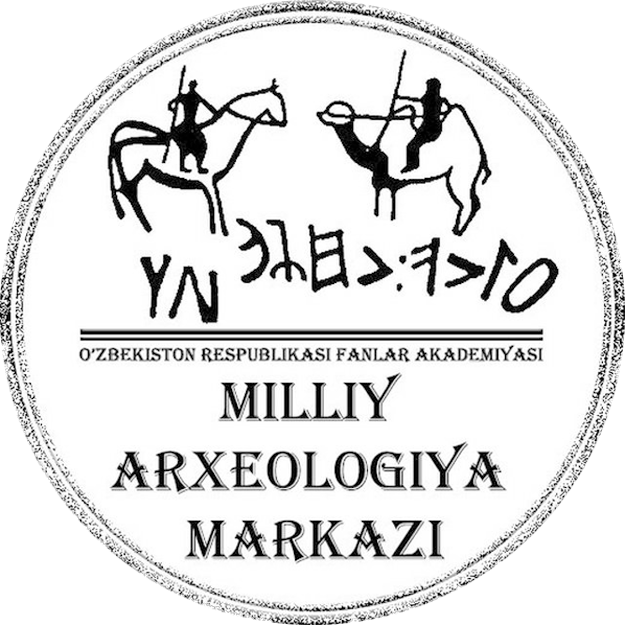History of the National Archaeological Center

Uzbekistan, as one of the ancient Eastern regions preserving archaeological monuments from various periods, was first studied in the late 19th century by prominent Orientalists such as V. V. Bartold and N. I. Veselovsky, as well as local enthusiasts like Akram Polvon Asqarov, Mirzo Abdullo Bukhari, Muhammad Vafo, and V. L. Vyatkin. This laid the foundation for the formation and development of archaeology as a young science in Uzbekistan. The full establishment of archaeology as a discipline in Uzbekistan dates back to the early 20th century, closely linked to the activities of the Institute of History and Archaeology of the Academy of Sciences of Uzbekistan, museums, universities, and the Institute of Art Studies.
On August 19, 1970, by Resolution No. 426 of the Cabinet of Ministers of Uzbekistan, the Institute of Archaeology was established based on the Institute of History and Archaeology of the Academy of Sciences of Uzbekistan, becoming the only specialized institution of its kind in Central Asia. The Institute began its activities in Samarkand on September 30, 1970, and in 1988, it was named after academician Yahyo G‘ulomov, who made a significant contribution to its establishment. From that time onward, the primary research areas of the Institute focused on studying ancient monuments to reconstruct the history of material and spiritual culture, periodizing the ancient monuments of Uzbekistan, researching the history of irrigation in the region, and developing scientific methods for the restoration and conservation of archaeological sites.
With the independence of Uzbekistan, the results of long-term fundamental research in archaeology began to be directly linked to the history of the Uzbek people. From the early years of independence, a new approach, new requirements, and tasks for the scientific study and preservation of the country's ancient past, glorious history, and unique cultural heritage left by ancestors were put on the state agenda. Particularly, a turning point was the meeting of Uzbekistan’s President I. A. Karimov in 1998 with a group of the country's leading historians and archaeologists. Following this meeting, the Cabinet of Ministers issued a resolution on “Improving the Activities of the Institute of History of the Academy of Sciences of Uzbekistan,” which became a practical roadmap for historians and archaeologists in their research activities. In response to the tasks outlined in this resolution, the Institute of Archaeology developed the “Concept for the Development of Archaeological Science in Uzbekistan.”
As a result of the significantly intensified research activities and their scientific impact during the years of independence, Uzbek archaeology reached a global scientific level. This facilitated the establishment of scientific cooperation with leading archaeological centers worldwide and the signing of international agreements on an equal basis. Currently, international archaeological research is being conducted in Uzbekistan in collaboration with scholars from Australia, the United States, Germany, Italy, Spain, Poland, Russia, France, Japan, and other countries.
Since 1959, the annual collections “History of Material Culture of Uzbekistan” and, since 2002, “Archaeological Research in Uzbekistan” have been published, summarizing scientific conclusions from archaeological research conducted in the country. In 2010, the scientific journal “Uzbekistan Archaeology” was launched.
Today, Uzbek archaeology operates in line with national interests, cultural and spiritual values, and the ideals of independence. The discipline has played an invaluable role in studying the scientific heritage of great scholars such as Ahmad al-Fargani, Imam Maturidi, Imam al-Bukhari, Burhanuddin Margilani, Amir Temur, and Mirzo Ulughbek, as well as in determining the official historical anniversaries of ancient cities like Samarkand, Bukhara, Karshi, Shakhrisabz, Khiva, Termez, Tashkent, and Margilan. The celebration of these anniversaries under the auspices of UNESCO over the past 25 years is a testament to the multifaceted and fruitful research conducted in Uzbekistan’s archaeology. The state's support and the creation of necessary conditions for comprehensive studies of ancient history have served as the foundation for this progress, making Uzbek archaeology globally recognized.
Year of Establishment: Initially, the Institute of Archaeology of the Academy of Sciences of Uzbekistan was established in Samarkand by Resolution No. 426 of the Cabinet of Ministers of the Uzbek SSR on August 19, 1970. Later, by Presidential Decree No. PP-2789 of February 17, 2017, “On Measures to Further Improve the Activities of the Academy of Sciences, the Organization, Management, and Financing of Scientific Research”, the institution was renamed the Institute of Archaeological Research of the Academy of Sciences of Uzbekistan. Subsequently, by Resolution No. 792 of the Cabinet of Ministers of Uzbekistan on September 21, 2019, the National Archaeological Center of the Academy of Sciences of Uzbekistan was established based on the Institute of Archaeological Research.



